“The Netflix for wine?” Out Denmark? Yes, and that app – with 70 million users – is already worth a billion. If you ever drink or buy wine, you can’t live without it. A combination of collected data and a lot of UGC means that Vivino is now ‘online market leader’ in a market with a turnover of more than 300 billion. How did they do that? And is it only for the sommeliers and wine connoisseurs among us, or is it an app for everyone? At least their is journey interesting.
Why?
Most FMCG items are cheap and we buy out of habit, or with some advice. When we buy wine, larger amounts are often involved. Buying the same wine over and over is not always possible – if only because of a limited edition. Relying on a label (nice!) or a gold sticker with “92” is not always a good choice for your taste. So it can be quite difficult to buy a suitable wine.
The Danes Heini Zachariassen and Theis Søndergaard also thought so in 2010. In a country where alcohol is extra expensive, they came up with Vivino.
The beginning
Zachariassen never fully understood wine. He went to the supermarket to pick out a bottle, but often stood with his hands in his hair when confronted with the inevitable “wall of wine”. It bothered him – so he decided to build an app that catalogues, organizes and ranks millions of bottles. “We had a problem that needed to be solved: I want to drink better wine, but I don’t know anything about wine,” he told CNN. He used that ignorance to develop an app for ‘regular’ people – and believed it could disrupt wine sales in the same way Amazon changed the way consumers buy books.
“Vivino was founded to help people learn and understand wine, without the elitism that has often stifled the wine industry,” confirms one expert.
Investment
Developing a good app takes time and money. But the industry was also interested: in 2016, the startup received funding of $25 million, led by Moet Hennessy CEO Christophe Navarre. Four series of venture capital later, they already saw 155 million in turnover in 2021 and the market value was estimated at 1 billion.
Corona was of course a success factor for the brand. People were at home, and alcohol was a welcome distraction. And people had time to delve into that world. Turnover doubled during this period.
Figures
Today the app has a global audience of approx 70 million users. Vivino’s team consists of 300 people all over the world. The database now contains no fewer than 18 million wines from 3,500 wine regions and 250,000 wineries. There are 104 million reviews and 300 million ratings. Nearly 3 billion labels were scanned.
In 2024, vivino.com had approx eight million monthly visits to its website, with an average visit duration of approximately two minutes and nine seconds. This made it one of the most visited alcohol e-commerce websites in the world. The software recognizes 25,000 photos per day, the ‘unrecognizable’ ones are processed manually by 50 hired Indian workers.
Ratings in UGC
The key to Vivino’s success is its personalized recommendations. The app uses a user’s past purchases, ratings and reviews to recommend new wines, styles and regions.
It’s all about reviews, but especially about ratings: they range from 1 to 5 stars. Until a while ago, this was only possible per half point, but since then the scaling up has been 0.1 point. This innovation came in response to the users’ #1 wish.
The classification is explained as:
- Less than 3 stars: Don’t bother.
- 3-4 stars: Worth a try if the price is right.
- 4 stars: Great wine!
- More than 4: If you can afford it, go for it!
It doesn’t really compare to ‘half of our 10-point scale’. The division into only 5 blocks means that everything above 4 is emotionally seen as ‘very high’, while in our scale this corresponds to the idea of values above 9. And there are certainly plenty of wines that score more than a 4, but don’t go for the top prize: read under 15 euros.
While the UGC causes a lot of noise at Tripadvisor, this is only a plus with Vivino. Why would anyone leave a fake review? If you don’t like a wine, simply give it a lower score.
Business model
Use of the app is ‘largely’ free, although a premium version was launched in 2023. Various functions of the existing app were added and a number of improvements were made. For example, premium offers: faster comparisons, improved statistics such as collection value and optimal drinking period, recommended wine-food combinations, a wine list scanner, a more exact “match for you” score and – of course – no advertisements. And your profile will receive a Premium badge, how nice.
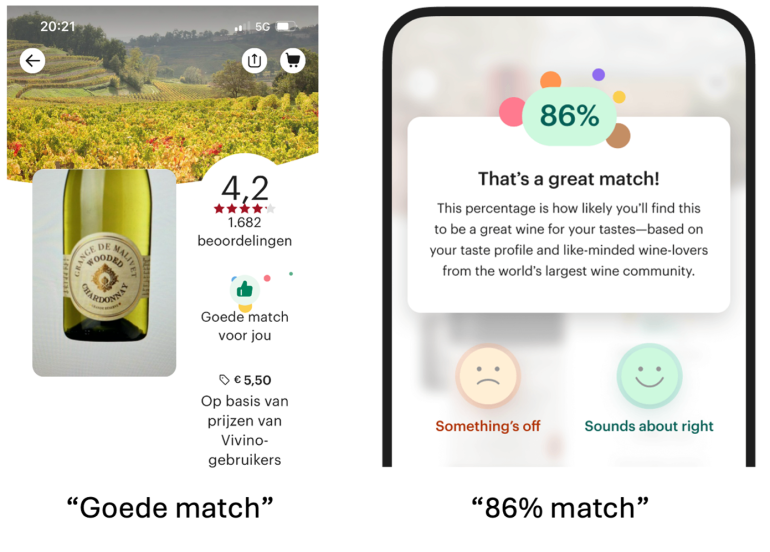
Vivino’s main revenues come from the premium version, marketing contributions from producers and distributors, and margins on DTC* wine sales through the platform by producers: more than 700 retailers in 17 countries through the platform. They work with major retailers, such as Marsh in the US and Sainsbury in the UK, to display reviews on the shop floor; online go offline.
Price
Importantly, Vivino is not in the business of selling wine at low prices, a practice they describe as ‘disrespectful to producers and destructive to the industry’. Still, I do have the feeling that I can get good deals through the app. Dutch legislation, which caps discounts at 25%, is respected (competitor Vino.com from Italy offers larger discounts, and continued to do so for a little longer than was allowed, but has now also been withdrawn in the Netherlands). The combination of event discounts – 14% discount for Valentine’s Day – with other promotions such as birthday discounts, and finding low prices for wines within and outside the Netherlands, results in very favorable prices. Add to this the “€15 discount on your first order of €150 or more” and you may ‘accidentally’ get more than the legal discount.
![]()
However, the price of a bottle of wine is subjective, you can also talk around it. In other markets, such as the US, the discount can be as high as 56% – and that was unusual in the Netherlands even before that legal restriction.
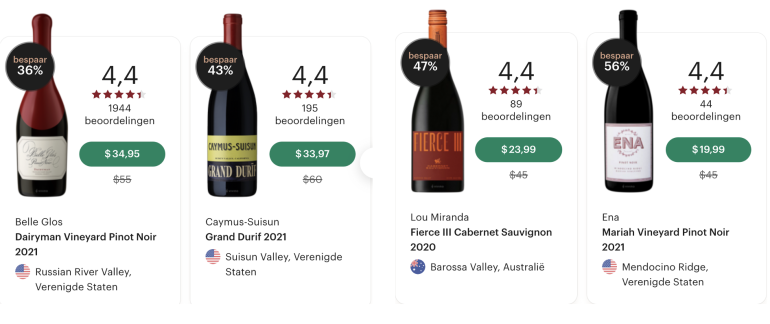
NB: In my experience, the more expensive a wine is, the better it is. However, that is not linear: a €30 wine is not necessarily twice as good as a €15 bottle. This week we ‘scored’ a “Vivino 4.4” for €5.95 at the Dirck III. So there you have it: just scan it in the store and you win a prize. Of course, taste is subjective, but the law of large numbers applies, and the app will compare your profile with a recommendation. A miss does not happen quickly. We even gave this a 4.5.
The users
According to market research institute International Wine and Spirit Record (IWSR), mainly consumers from the Boomer generation (1946-1964) and Generation X (1965-1979) buy wine in online stores. However, there are some countries where younger consumers lead the online sales statistics. Millennials (1981-1996) and older members of Generation Z (1996-2009) made up the majority of buyers in China (80%) and Brazil (64%).
The app is available in 12 languages, shipping to 23 countries. It’s on the opening screen of my phone, because I use it almost all the time.
To find out what you are offered in restaurants – with a wine pairing – you can ask the sommelier to show you the bottle to scan the label. Of course, after his/her flowery story about the chosen wine. They have gotten used to it now and I believe they appreciate the guest’s interest rather than feeling criticized.
The premium version also offers the option to scan the wine list.
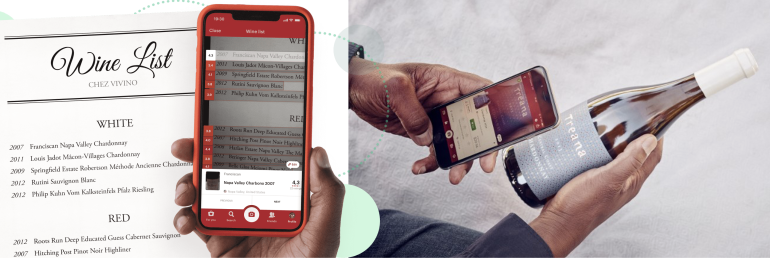
Data company, the Netflix of wine
The idea for the new ‘Wine for You’ feature came about as the number of consumers using the app increased. “We started to realize,” Zachariassen said, “that we were no longer just an app company – we are a data company. The more users used the app, the more we learned about the types of wine they preferred. With this information we could help them find new wines they would like. It’s almost like we could be a ‘wine dating app’.”
He continued: “We were also inspired by Netflix,” explaining that Vivino can help consumers learn more about their own taste preferences, so they discover new wines and regions they might otherwise never consider – just like Netflix makes recommendations , based on the user’s viewing history. Fortune also noted this in 2021: “How digital sommelier Vivino is becoming a Netflix for wine”, which was noted.
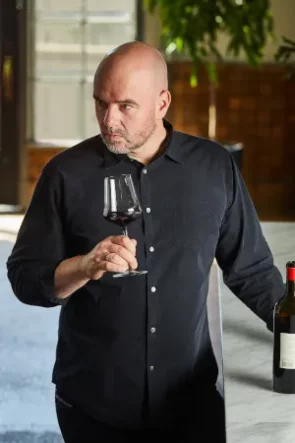
Heini Zachariassen
I am very pleased with their data skills: if you look at a wine that scores a 4 and costs 15 euros, they give you two sets of recommendations. The first shows comparable wines that also score a 4, but cost less, the second lists wines that cost 15 euros but score higher. All this within your taste profile. A step forward from it Amazon-model (“customers like you were also interested in…”). Brilliant!
The future
Wine is a $300 billion industry and if you look at the online part of wine, it’s still very small. In the US it is less than 4% – but that was only 0.3% in 2018! Globally, 31% of wine drinkers currently do not buy wine online – but is considering doing so in the future.
There is still clear growth opportunity for wine in e-commerce, with IWSR forecasting sales to grow +2% annually between 2021 and 2026, generating more than US$1 billion in additional sales. Vivino contributed to this and still plays an important role. The broad deployment of UGC, in addition to the basic information that they have entered themselves, is an enormous success factor, which has increased the reliability – and therefore the usefulness – of the app.
And if you also think you want to develop such an app yourself, check out “Entrepreneurs Guide To Create A Wine Marketplace App Like Vivino” from Oyelabs. You might be a billionaire in 10 years.
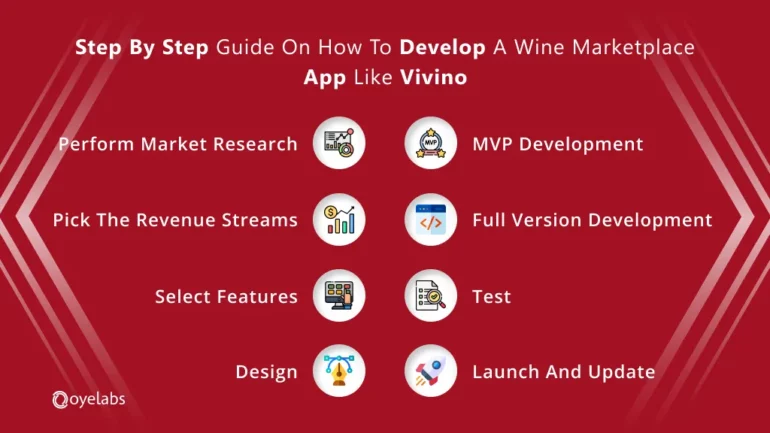
* DTC = Direct To Consumer, or the (online) sale of products directly from the manufacturer to customers.
Source: www.frankwatching.com


